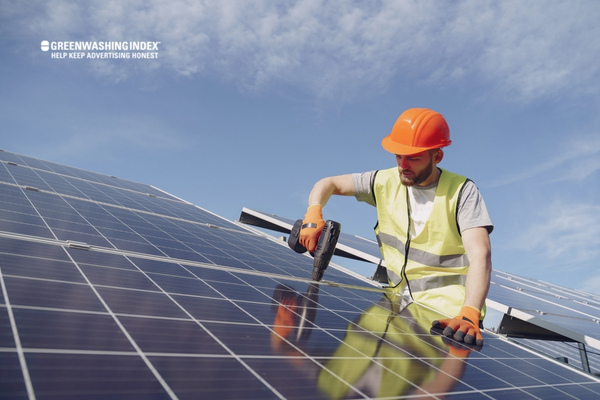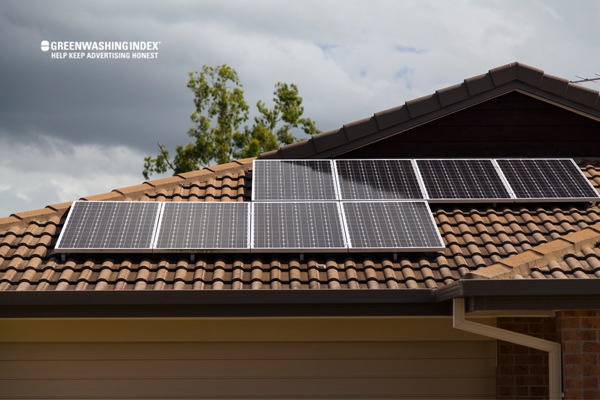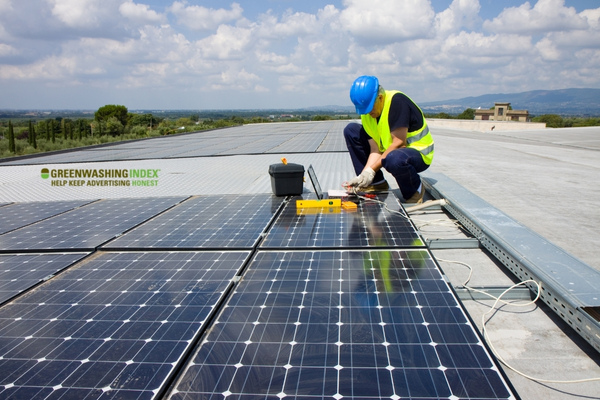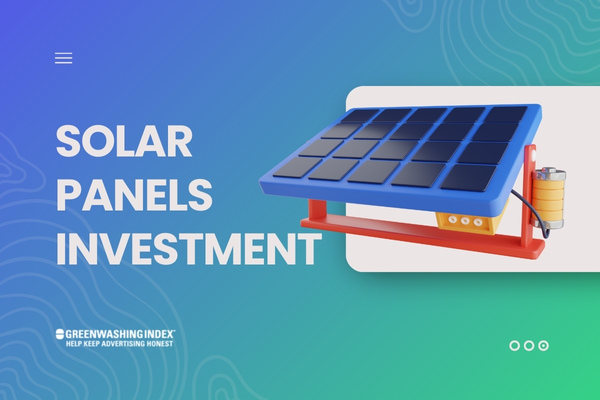When it comes to powering up our homes, “solar panels” is a term we’re hearing more and more often these days. But let’s cut through the buzz – are they really the groundbreaking solution for slashing those hefty electricity bills and saving our planet? If you’ve ever stared at your rising power costs or grimaced over news of another fossil fuel mishap, then stick around. You’re not alone in wondering if harnessing that big ball of fire in the sky might just be smarter than digging into Earth’s crust.
So, I’ve heard you asking: Are solar panels actually worth it? Well folks, as an electrical engineer who has seen this industry evolve firsthand, here’s my scoop on why solar energy assessment becomes a game-changer for many.
Yes indeed – under the right conditions such as a sunny location with proper incentives thrown into the mix – making that shift towards sustainable electricity generation can pay off both financially and environmentally.
What You’ll Discover Here
- Insider views on solar panel efficacy from an electrical engineering lens
- Real numbers breakdown between installation costs versus long-term savings
- Personal stories highlighting whether homeowners benefited from going solar
All About Solar Panels From How It Works? to It’s Types
Solar panels are at the forefront of renewable energy solutions, changing the way we think about and use power. As an electrical engineer, I’ve seen firsthand what goes into producing electricity from these nifty devices, and let me tell you—the science behind it is as fascinating as it is vital for our shift toward sustainability.

But before delving deep into their worthiness (which I’ve plenty to say), let’s break down how they actually work and explore the different types available in today’s market.
How Do Solar Panels Work?
You might have seen those shiny blue or black solar panels perched on rooftops or sprawling over acres of land, silently capturing sunlight day after day. Their job? To convert that sunlight directly into electricity—no smokestacks or spinning turbines in sight.
- Photovoltaic Effect: It all starts with a phenomenon known as the photovoltaic effect. Simply put: when light hits certain materials (like silicon, commonly used in solar cells), it excites electrons which start moving around.
- This electron hustle creates an electric current because now you have a flow—a stream of charged particles ready to do some work!
- Layered within each solar panel are individual cells made up mostly of this silicon stuff; crafted together carefully so that when these excited electrons start their dance party (aka generating current), they’re harnessed effectively.
- The Complete Setup: Let’s take this outside the classroom for a second:
- A home setup would involve multiple interconnected solar panels—the actual “system”—along with components like inverters that turn direct current (DC) produced by your roof-dwelling sun catchers into alternating current (AC). ACs are what powers everything from your fridge to your phone charger inside your house.
- Energy Flow:
- So here’s how things go: Sunlight pours down -> Electrons get jazzed up inside cells -> Electric currents ensue -> Inverter makes sure it’s usable household-type power —> Viola! You’re running off sun juice!
The beauty lies not just in its simplicity but also in transparency—you can practically see through each step where clean energy has substituted traditional sources without any emissions once installed.
Types of Solar Panels
So now that we understand basically “how”, another important question creeps up – “What kind?” Believe me when I say not all sunny-side gadgets were created equal:
- Monocrystalline
- typically more efficient
- lasts longer
- higher cost
These elite members sport single-crystal structure makes them outstanding performers—they can whisk away quite a bit more sunshine turning points than their counterparts but ask for extra dough upfront because quality ain’t cheap folks!
- Polycrystalline
- less expensive than monocrystalline
If budgeting tops priority lists yet efficiency still matters somewhat then polycrystalline could be meet-in-the-middle territory; comprised of numerous crystals jammed together result doesn’t hit high notes quite like mono cousins but neither does the price tag attached shot heard ’round wallet-world either.
- less expensive than monocrystalline
Remember though my friends—we aren’t shopping for veggies here where freshness sways decisions meter most time think investment something last decades pay itself many times over words weighing pros and cons closely smart move especially larger purchases such life infrastructure level arrangements!?
Are Solar Panels Worth It? An Electrical Engineer’s Perspective
As an electrical engineer, I’ve often pondered the real value of solar panels. With my technical background and firsthand experience in the energy sector, I can peel back layers of data to unearth some truths about this clean energy source. Let’s get into it.
Costs Vs. Savings Analysis
Breaking down whether solar panels are a smart investment is not just about looking at sticker prices versus monthly utility bills—it’s a complex equation that spans years.
Initial Installation Expenses:
- Equipment: The cost for panels themselves plus inverters to convert DC electricity to usable AC.
- Labor & Permitting: Professional installation fees and local government permits or inspections add up.
- Additional Gear: Mounting hardware, wiring, and potential roof upgrades if necessary.
Long-Term Financial Benefits:
- Lower monthly electric bills—immediately noticeable after installation. Savings Equation Features:
- Efficiency Ratings: Panels with higher efficiency can generate more power per square foot but may come at a premium price point.
- Maintenance Costs: Generally low but should be accounted for over time; cleaning services or repairs might pop up on occasion.
Holistic Calculations Include:
- Energy Usage Patterns – How much power do you consume?
- Sunlight Availability – Based on your location which affects panel productivity
- Rate Inflation – Historical increase in grid electricity costs could enhance savings over time
Savings don’t happen overnight; they accumulate slowly as reduced utility payments make up for upfront fees until break-even points are hit—and then it begins paying back!
Energy Independence
Speaking from an engineering viewpoint, let’s discuss how harnessing sunlight tilts scales toward self-reliance:
Grid Reliance Reduction:
Imagine knocking sizeable chunks off dependence on unpredictable grid supplies—with enough capacity even surplus could be sold back!
Renewable Pathway Outlines:
- Personal control over generation means fewer worries during outages or peak demand times when rates surge—the sun won’t charge extra!
Inherent Stability Offerings:
1) Fixed Production Cost (sunlight is free)
2) Battery Integration Possibilities (store excess daytime energy for night use)
It instills resilience against not only rising traditional power costs but also dips in availability due to extreme weather conditions or infrastructure failings—suddenly those rolling blackouts aren’t your problem anymore.
Considerations Before Investing In Solar Panels
Before leaping into the realm of solar energy, there’s more to mull over than just the appealing prospect of energy savings. It’s essential to consider a myriad of aspects that could make or break your solar panel experience.

Location and Climate
When it comes to harnessing solar power, where you live plays a pivotal role. Here’s what you need to know:
- Sunlight Exposure: Areas closer to the equator typically get more sun hours per day, which translates into potentially higher electricity generation.
- Seasonal Variations: Regions with distinct seasons may experience significant variances in performance – ample production in summer but possibly scanty results come winter.
- Climate Impact: Frequent cloud cover and rainfall can limit effective sunlight reaching your panels; therefore locations notorious for their grey skies might reduce efficiency.
All things considered:
- Consult local climate data charts; they’re goldmines for understanding average sunshine levels in your area.
- Consider professional site assessments; experts can pinpoint exact figures tied closely with anticipated panel output.
Property Infrastructure
Installing solar panels isn’t merely about mounting shiny objects on top of roofs—it requires due diligence on whether a property is structurally sound enough:
- Roof Condition & Material: Some materials like slate or wood shake might need extra considerations compared to typical metal or asphalt installations.
- Intensive systems demand sturdy framing capable of holding additional weight thrust upon older infrastructures––a potential no-go if support isn’t up-to-par xAxis-wise!
Beyond roofs:
- Electrical Upgrade: Older homes may necessitate an electrical system overhaul—think amperage adequacy before feeding energy back into the grid!
Hiring structural engineers alongside certified electricians is always prudent—they’ll flag necessary adaptations well before any installation commences.
Available Incentives/ Policies
Keep this notion tucked away—the cost-effectiveness puzzle includes various incentives designed specifically to make green choices easier on wallets!
Key factors hinging around incentives include:
- Federal tax credits: A chunk off upfront costs through initiatives like Investment Tax Credit (ITC).
- State rebates/credits: Vary from state to state so checking local guidelines should be priority one during budget planning phases!
- Net metering policies designed by utility companies also gear towards sweetening pot immensely when it kicks time compensating surplus production sent grid way!
Arm yourself :
- With hard research conducted directly within governing bodies’ web portals—information here remains reliably updated regarding renewable pushes present moment onward.
Align expectations realistically by amplifying the knowledge palette concerning these logistical concerns–it primes decision-making approaches considerably!
Real-life Experiences with Solar Panels
Among the myriad of conversations and debates about sustainability in electricity generation, incorporating solar panels has been at the forefront. It’s one thing to hear an expert talk in abstract terms about theory and technology, but I’ve found that real tales from actual homeowners paint a far more vibrant picture.

Case studies of homes with installed solar panels
To really dive into whether solar energy is worth the investment, let’s look closely at some case studies where homeowners took the plunge into harnessing power from our nearest star:
- The Johnson Family Home (Phoenix, AZ): Living under Arizona’s sun-soaked skies made a compelling case for switching to solar power. Here’s how it broke down for them:
- Installation: They opted for high-efficiency monocrystalline panels.
- Costs: The up-front cost was $15k after local incentives.
- Return on Investment (ROI) clocked in impressively. Within seven years their savings had covered installation costs due to lower electric bills.
- Add-on perks included increased home valuation by approximately 4% without hiking property taxes.
- Green Roof Rowhouses (Portland, OR): A community project demonstrated across-the-board benefits:
- Community Scale Project: Each rowhouse featured similar photovoltaic systems sized according to each home’s electrical needs.
– Effect on Bills: On average residents reported saving between $100-$200 monthly off their electric bill during peak sunlight months
– Social Incentive: Beyond personal savings was a shared sense of environmental responsibility which unified this tight-knit community further.
- Community Scale Project: Each rowhouse featured similar photovoltaic systems sized according to each home’s electrical needs.
These snapshots represent only two instances among thousands across America where families have embarked on journeys towards sustainable living through the adoption of solar panels.
While these stories share positive outcomes overall — significant energy bill reductions accompanied by reduced carbon footprints — they also underscore recurring points worthy of consideration before installing your own system:
- Evaluation: Understand your home’s geographic position as well as any structural compromises that may need addressing before installation occurs.
- Investigation: Look extensively into federal tax credits or state-specific incentives available in your area—it can make quite a difference financially!
- Expectation Management: Even though many owners recoup their initial outlay within several years after transitioning over entirely—keep an eye toward those first few utility cycles post-installation when you’re navigating both worlds simultaneously during what I like to call ‘the adjustment phase’.
There are undeniable intricacies linked directly back not just toward technology itself—but also relating profoundly to individual circumstances surrounding use cases per household too! Decisions shouldn’t be taken lightly because impacts run deeper than mere aesthetics; we’re talking financial forecasting alongside enduring lifestyle alterations here!
So take heart if you find yourself intrigued: numerous folks trailblazing ahead prove daily that quality-of-life improvements facilitated through smart integration are possible—and perhaps most importantly—they’re proving effective right now today amidst communities nationwide!
FAQs
What is the lifespan of an average residential solar panel system?
Most residential solar panel systems can last between 25 to 30 years, though some might keep on chugging well beyond that with decreased efficiency.
How much maintenance do solar panel systems require?
Solar panels are pretty low-maintenance. Keep ’em clean and check for damage occasionally, especially after any mean old storms roll through.
Will my property value increase if I install solar panels?
Absolutely. Adding a renewable energy source like solar power usually bumps up your home’s market value and attractiveness to eco-conscious buyers.
Conclusion
Solar panels are certainly more than a buzzword in today’s energy dialogue; they’re a tangible investment toward personal energy independence and environmental stewardship. As an electrical engineer, I see the value beyond the initial sticker shock of installation costs. Analyzing long-term savings on electricity bills and considering government incentives make solar power increasingly accessible and financially viable for many homeowners.
Factoring in sustainability goals, like reducing one’s carbon footprint, is also crucial. It’s clear that integrating solar panels into one’s home isn’t only about immediate benefits – it’s about contributing to a grander vision of clean electricity generation for future generations.
The idea that we as individuals can participate directly in energy production revolutionizes how we think about our relationship with power consumption. With this perspective shift at heart, weighing out pros against cons indicates solar might just be worth soaking up.



